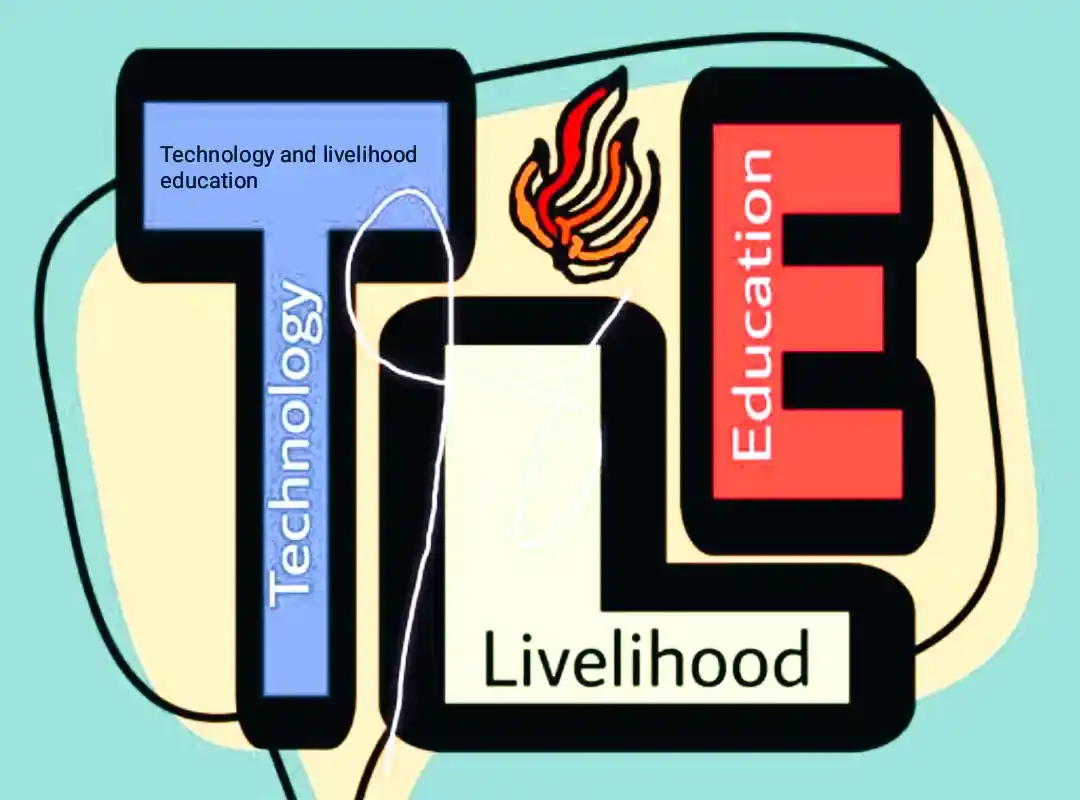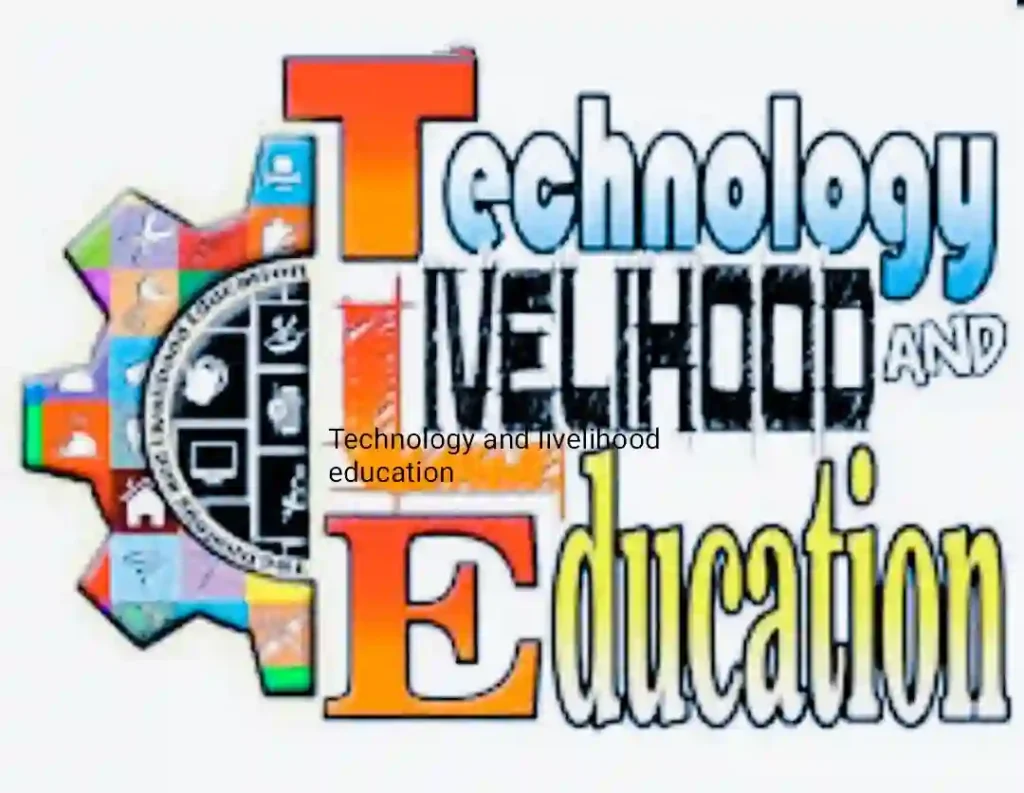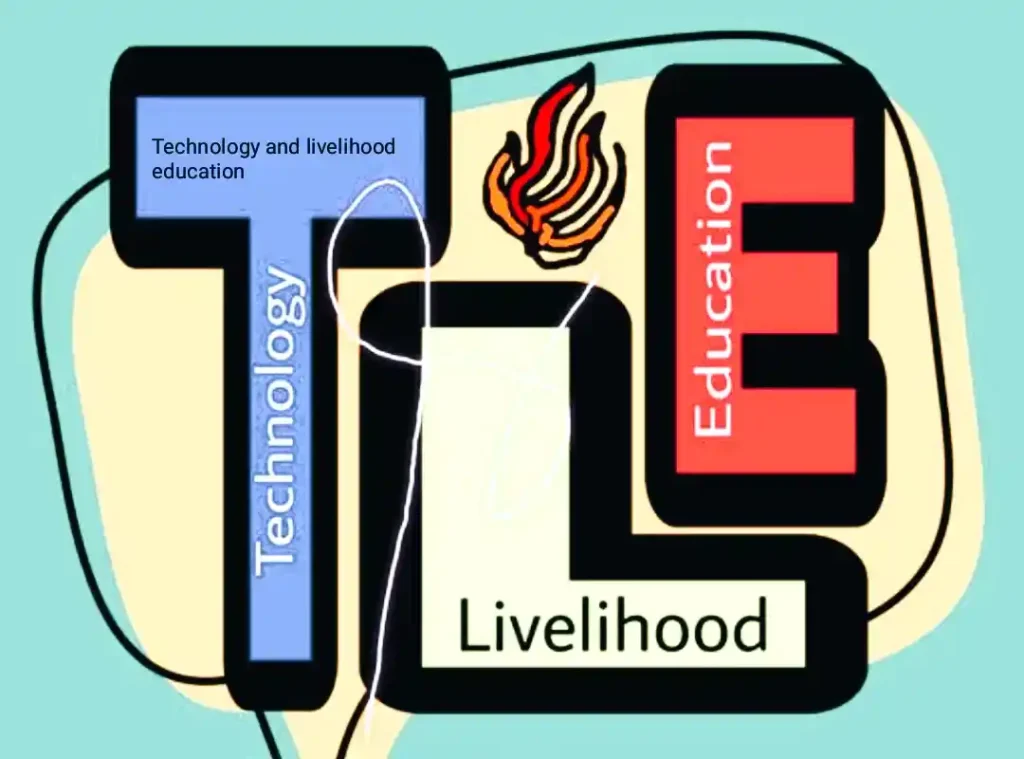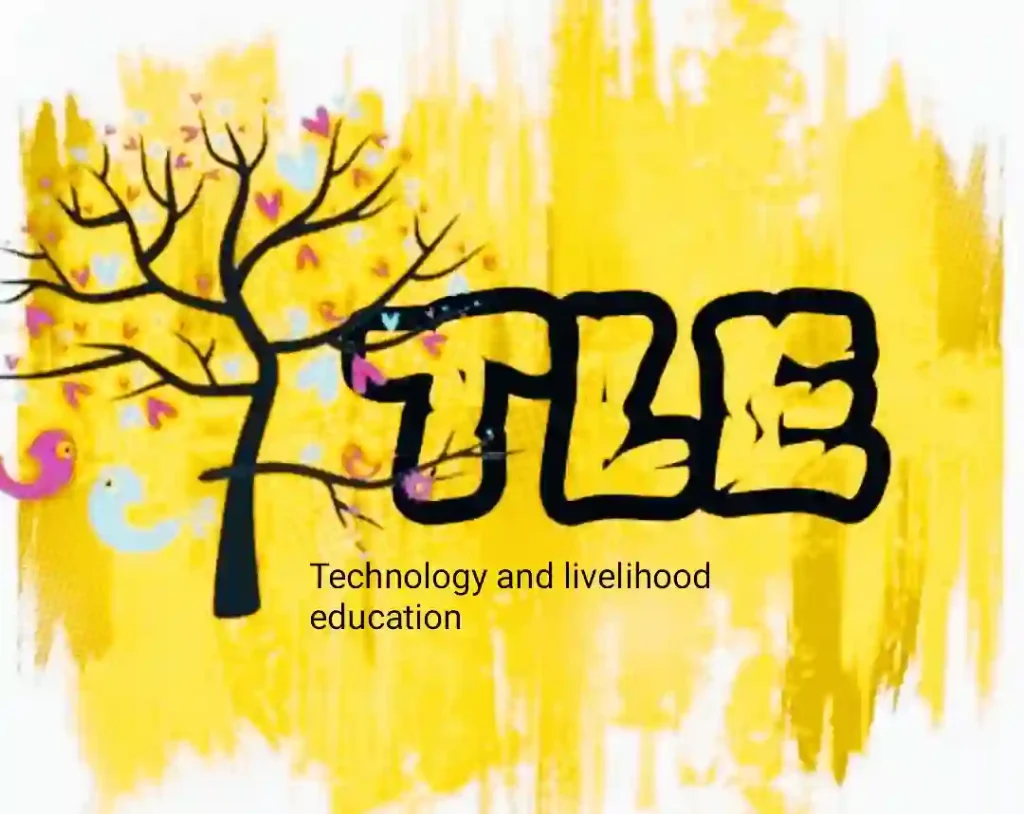Technology and Livelihood Education comprehensive overview

The synergy between technology and livelihood education (TLE) has never been more crucial in today’s rapidly evolving world. Technology continues to transform various aspects of life, from how we communicate to how we work. At the same time, livelihood education ensures that individuals possess the essential skills to thrive in an increasingly competitive job market. This comprehensive blog post will explore the impact, significance, and future potential of Technology and Livelihood Education (TLE) in building future-ready individuals. We will also delve into integrating technology into education, the importance of technical-vocational education, and how TLE can foster sustainable development.
Table of Contents
What is Technology and Livelihood Education (TLE)?
Technology and Livelihood Education (TLE) is an area of study in the educational system that equips students with the technical and vocational skills needed for employment and self-sufficiency. Technology and livelihood education covers various fields, including home economics, industrial arts, agriculture, and information technology. It focuses on practical, hands-on training that prepares students for specific jobs, making it highly relevant in today’s job market, where technical skills are in high demand.
TLE is essential because it bridges the gap between theoretical knowledge and practical application. It allows students to acquire skills necessary for personal growth, career development, and societal contribution. As technology plays a crucial role in the economy, integrating technology into livelihood education has opened new opportunities for learners, empowering them to become innovative, adaptable, and self-reliant.

History of technology and livelihood education
The history of Technology and Livelihood Education (TLE) is rooted in integrating practical skills training into formal education systems, particularly in the Philippines, where it is a critical component of secondary education. TLE evolved from earlier vocational education programs to equip students with hands-on skills in various trades and livelihoods.
Key Milestones in TLE History:
- Pre-20th Century Vocational Training: Early forms of vocational training were informal, passed down through apprenticeships or community-based skills transfer. Agricultural and trade skills were essential to communities, and practical education often occurred outside formal schooling.
- Early 20th Century: With the advent of formal education systems under American influence in the Philippines, vocational education began to be incorporated into curricula. Schools introduced manual training and industrial arts to foster skills in agriculture, mechanics, and home economics.
- Post-World War II (1940s-1960s): After World War II, the need for skilled workers grew as the country worked to rebuild its infrastructure. The government emphasized the inclusion of vocational subjects in secondary education. Technical trades, farming, and home economics courses became more formalized within schools.
- 1970s-1980s: The Philippine educational system underwent several reforms to enhance vocational and livelihood education. The 1973 Educational Development Decree and subsequent policies reinforced the importance of technical-vocational education in the Secondary Curriculum. This period saw the introduction of TLE as a formal subject.
- K-12 Curriculum (2013): Introducing the K-12 Basic Education Curriculum in the Philippines brought a more structured and expanded version of TLE. This reform required all junior high school students to take TLE subjects, with specialization options like Agriculture, Home Economics, Industrial Arts, and Information and Communication Technology (ICT). Senior high school students could also choose TLE strands under the Technical-Vocational-Livelihood (TVL) track.
- Present Day: Today, TLE is a core component of the Philippine education system, designed to give students practical and entrepreneurial skills to prepare them for employment or further education. It covers various specializations and reflects the changing demands of the labour market and technology.
Through the years, TLE has played a significant role in equipping students with the skills to adapt to rural and urban livelihoods while addressing the growing importance of technology and entrepreneurship in modern economies.
The Importance of Technology and Livelihood Education in Modern Education
Technology and livelihood education stand out as a vital component in the modern education landscape. While important, the emphasis on academic subjects often overshadows the need for practical skills development. However, as economies shift and industries evolve, there is a growing recognition of the importance of technical and vocational skills provided through Technology and Livelihood Education. Here’s why TLE is essential in modern education:
- Practical Skill Development: TLE is deeply rooted in hands-on learning. Students learn by doing, which helps them acquire practical skills directly applicable to fields such as carpentry, culinary arts, or information technology. This experience-based learning enables students to build confidence in their abilities and apply their knowledge in real-world situations.
- Career Readiness: TLE prepares students for the workforce by equipping them with skills in demand across industries. With a focus on technical and vocational education, students can enter the workforce as skilled professionals or start businesses. This focus on employability aligns with the growing demand for individuals who can contribute to the economy with their specialized skills.
- Promoting Entrepreneurship: TLE plays a significant role in fostering entrepreneurial skills. TLE encourages self-employment and small business creation by teaching students practical skills such as sewing, cooking, or computer programming. Many students who graduate from TLE programs become successful entrepreneurs, contributing to local economies and creating job opportunities for others.
- Adaptability in a Changing Job Market: Work is changing rapidly as industries adopt new technologies. TLE equips students with the flexibility and adaptability to thrive in a dynamic job market. By providing them with technical skills, problem-solving abilities, and innovative thinking, TLE enables individuals to adapt to new roles, technologies, and challenges in the workplace.
- Fostering Sustainable Development: TLE also contributes to sustainable development by promoting environmentally responsible practices in agriculture, food production, and industrial arts. Students learn to implement sustainable methods, conserve resources, and reduce field waste through practical training.
The Integration of Technology in Livelihood Education
Technology has become an integral part of modern life, and its integration into livelihood education has significantly enhanced the relevance and effectiveness of Technology in Livelihood Education programs. Technology in teaching and learning is transforming traditional vocational education, making it more accessible, efficient, and aligned with the needs of the 21st-century workforce. Here are some ways technology is revolutionizing livelihood education:
- Digital Learning Platforms: Online learning platforms have expanded access to Technology in Livelihood Education programs, allowing students to learn from anywhere and at their own pace. These platforms offer courses in various fields, from information technology and digital marketing to agriculture and culinary arts. This flexibility has made it easier for students, especially those in remote areas, to acquire technical skills.
- Simulations and Virtual Labs: Virtual labs and simulations allow students to practice technical skills in a safe and controlled environment. These technologies provide hands-on experience in automotive repair, electrical engineering, and healthcare. Virtual reality (VR) and augmented reality (AR) technologies also create immersive learning experiences, allowing students to explore real-world scenarios without the risk associated with traditional apprenticeships.
- Automation and Smart Tools: In industrial arts and technical fields, using intelligent tools and automation has changed how skills are taught. For example, students learning carpentry or manufacturing can now work with CNC machines and 3D printers, gaining experience with cutting-edge technologies increasingly used in modern industries. This enhances their skills and prepares them for the future of work.
- Coding and Digital Skills: The growing importance of information technology has led to an increased focus on teaching coding, digital literacy, and computer skills within TLE programs. Learning to code, design websites, or work with databases is essential for many careers today. By integrating these skills into TLE, students are better prepared for a wide range of job opportunities in the technology sector.
- Collaborative Learning: Technology enables collaborative learning, where students can work together on projects in different locations. This is particularly beneficial in TLE, where teamwork and problem-solving are essential skills. Through digital platforms, students can collaborate on projects, share ideas, and learn from each other, fostering a sense of community and enhancing the learning experience.
Challenges in the Implementation of Technology and Livelihood Education
While TLE has proven beneficial for students and society, its implementation is challenging. Some of the common challenges in the delivery of TLE programs include:
- Lack of Resources and Funding: Many schools, especially in low-income areas, need help to provide adequate resources for TLE programs. This consists of a need for hands-on learning equipment, materials, and technology. With sufficient funding, it can be easier to maintain high-quality vocational training programs that meet industry standards.
- Teacher Training: The success of TLE programs depends mainly on the quality of instruction. However, many teachers may need more training or experience to teach technical subjects, especially as new technologies are introduced. Continuous professional development and training are essential for teachers to stay updated on the latest tools and techniques used in their respective fields.
- Stigma Surrounding Vocational Education: In many societies, there is a stigma attached to vocational education, with a preference for academic routes to success. This perception can discourage students from enrolling in TLE programs despite the potential for high-paying and fulfilling careers in technical fields. Efforts to change these perceptions and promote the value of vocational education are crucial for increasing enrollment in TLE programs.
- Keeping Up with Technological Advancements: Technology is evolving rapidly, and technology and livelihood education programs must keep pace with these changes to remain relevant. This requires constant updates to curricula, equipment, and teaching methods. Schools must also ensure that students learn the latest skills demanded by employers, which can be challenging and resource-intensive.
- Ensuring Equal Access: Equal access to technology and livelihood education programs is another challenge, particularly for rural or marginalized students. The digital divide, lack of infrastructure, and limited access to technology can create barriers to participation in TLE programs, especially those that rely on online learning platforms or advanced technologies.

The Future of Technology and Livelihood Education
The future of technology and livelihood education is bright, with the potential to play an even more significant role in preparing individuals for the jobs of tomorrow. As the world faces climate change, economic inequality, and technological disruption, TLE can be a crucial driver of positive change. Here are some future trends and possibilities for technology and livelihood education:
- Green Technology and Sustainable Practices: As sustainability becomes a global priority, technology and livelihood education programs will increasingly focus on green technologies and sustainable practices. Students will be trained in renewable energy, sustainable agriculture, and eco-friendly manufacturing areas. This shift will help address environmental challenges and create new job opportunities in the growing green economy.
- Lifelong Learning: Lifelong learning is becoming more critical as individuals need to continuously update their skills to remain competitive in the job market. technology and livelihood education programs must evolve to offer more flexible, modular learning opportunities for individuals to upskill or reskill throughout their careers. This could include short courses, certifications, or online programs that cater to working professionals.
- Collaboration with Industry: Closer collaboration between educational institutions and industry will be essential for ensuring that technology and livelihood education programs remain relevant to the needs of employers. By working with industry partners, schools can develop curricula that reflect current industry standards, offer internships or apprenticeships, and provide students real-world experience.
- Global Skills Recognition: As economies become more interconnected, there is a growing need for global recognition of skills and qualifications. TLE programs could play a role in creating standardized certifications recognized across borders, allowing individuals to work in different countries without retraining.
- Artificial Intelligence and Automation: The rise of artificial intelligence (AI) and automation will impact many industries, and TLE programs must adapt to this new reality. Students must be trained in using AI tools, programming robotics, and working alongside automated systems. Additionally, TLE programs may also focus on teaching soft skills such as creativity, problem-solving, and emotional intelligence, which are less likely to be automated.
Technology and Livelihood Education 6
Technology and Livelihood Education (TLE) for Grade 6 introduces students to practical knowledge and skills related to various aspects of technology, home economics, agriculture, and entrepreneurship. It aims to develop students’ abilities to apply technical skills in real-life situations, preparing them for future careers or further education in these fields.
Here’s an overview of what might be covered in TLE 6:
Home Economics
- Basic Cooking and Nutrition: Understanding food groups, balanced diets, and simple cooking techniques.
- Home Management: Learning about household chores, cleaning, and basic budgeting.
- Sewing and Handicrafts: Simple sewing projects like making bags or pillowcases and creating handicrafts from recycled materials.
Agriculture
- Planting and Gardening: Basic skills in growing vegetables and caring for plants.
- Animal Care: Introduction to raising small animals like chickens or fish.
- Sustainable Practices: Learning about composting, waste management, and eco-friendly farming.
Entrepreneurship
- Business Basics: Learning how to start a small business, including budgeting, marketing, and selling products.
- Selling Handicrafts or Produce: Practical experience in selling items made in class.
- Money Management: Simple accounting skills, like how to keep track of profits and expenses.
Industrial Arts
- Basic Woodworking: Using simple tools to create small projects, such as shelves or birdhouses.
- Electrical Work: Introduction to basic electrical circuits and safely working with small electrical devices.
- Recycling Projects: Turning waste materials into valuable items.
Information and Communication Technology (ICT)
- Computer Basics: Learning about different computer parts and using basic programs like word processors or spreadsheets.
- Internet Safety: Understanding how to use the Internet responsibly and safely.
- Simple Coding: Introduction to coding through beginner-friendly platforms.
Key Goals:
- Skill Development: To equip students with practical skills for daily life and future careers.
- Creativity and Problem Solving: Encourage students to think creatively and devise solutions to common problems using available resources.
- Work Ethics and Responsibility: Teaching the value of hard work, responsibility, and ethical behaviour in various types of work.
In Grade 6, TLE is a foundation for more advanced technical and vocational education at higher levels. It provides hands-on learning that builds confidence and practical knowledge for students.

Lesson plan in technology and livelihood education
Here’s a sample Lesson Plan for Technology and Livelihood Education (TLE) focused on Basic Electricity:
Lesson Plan in technology and livelihood education: Basic Electricity
Grade Level: 9
Subject: Technology and Livelihood Education (TLE) – Industrial Arts
Topic: Basic Electricity
Time Duration: 1 Hour
Objectives
At the end of the lesson, students should be able to:
- Understand the basic concepts of electricity.
- Identify the different components of an electrical circuit.
- Demonstrate how to connect a simple electrical circuit.
- Follow safety precautions when working with electrical tools and equipment.
- Subject Matter
Topic: Basic Electricity
Materials:
- PowerPoint presentation on basic electricity
- Wires, batteries, light bulbs, and switches for circuit assembly
- Safety gloves and goggles
- Electrical tools (screwdriver, pliers, etc.)
References:
- Technology and Livelihood Education (TLE) Curriculum Guide
- Basic Electricity modules
- Procedure
- Review
- Please review the previous lesson on Safety Practices in the Workplace, emphasizing the importance of safety when working with electricity.
Motivation/Introduction
- Show a short video or a demonstration of how electricity powers up standard household devices.
- Ask students: “Can you imagine your life without electricity?”
- Discuss the importance of learning about electricity in daily life.
- Presentation/Discussion
- Definition of Electricity
- Introduce what electricity is (flow of electrons through a conductor).
- Discuss how electricity powers up homes, schools, and industries.
- Essential Components of an Electrical Circuit
- Power Source (battery, outlet)
- Conductors (wires)
- Load (light bulb, fan, etc.)
- Switches (on/off control)
- Types of Circuits
- Series Circuit
- Parallel Circuit
- Essential Tools Used in Electrical Work
- Identify the common tools and equipment used for working with electricity (e.g., screwdriver, pliers, tester).
- Safety Precautions
- Emphasize the importance of safety when working with electricity.
- Always wear protective gear.
- Ensure that the power is turned off when working on electrical circuits.
- Activity
- Hands-on Activity: Creating a Simple Circuit
- Divide the class into groups.
- Provide each group with a kit containing wires, batteries, light bulbs, and switches.
- Let the students assemble a simple circuit to light a bulb.
- Observe the flow of electricity through the circuit.
Generalization
- Ask the students to summarize the critical points of the lesson.
- What is electricity?
- What are the components of an electrical circuit?
- Why is it important to follow safety measures?
Application
- Ask students to think about their daily devices and how electricity makes them work.
- Discuss the roles of electricians and why electrical skills are valuable in different careers.
Evaluation
Assessment:
- Written Quiz on basic electricity concepts (10 questions).
- Practical Test: Ask students to assemble a simple circuit and demonstrate its function individually.
- Assignment
- Research on Renewable Sources of Electricity (solar, wind, hydroelectric).
- Prepare a short report on how renewable energy works and why it is essential for the future.
This lesson plan combines theoretical and practical components, making the lesson both informative and interactive.
Conclusion
Technology and Livelihood Education is more than just a set of vocational skills; it is a pathway to personal empowerment, economic growth, and societal development. technology and livelihood education plays a crucial role in shaping the future of work and the economy by providing individuals with the tools and knowledge needed to succeed in a rapidly changing world. Technology integration into livelihood education has opened up new possibilities for students, making learning more accessible, relevant, and aligned with the needs of the 21st century.
As we look to the future, it is clear that technology and livelihood education will continue to evolve and adapt to meet the challenges of a globalized and technology-driven world. By addressing the barrier technology and livelihood educations to access, ensuring that curricula remain current, and promoting the value of vocational education, we can ensure that technology and livelihood education remains a powerful force for positive change, helping individuals build successful, fulfilling, and future-ready careers.



